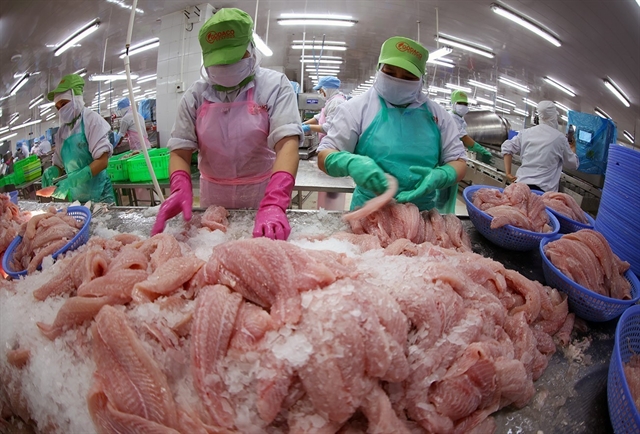 Opinion
Opinion

Professor Doctor Vũ Trọng Hồng, former deputy minister of agriculture and rural development, argues that the country’s recent experiences with natural calamities wre caused in part by a failure to link the national strategy on economic development with a plan to prevent environmental disasters.
 |
| Vũ Trọng Hồng |
Professor Doctor Vũ Trọng Hồng, former deputy minister of agriculture and rural development, argues that the country’s recent experiences with natural calamities wre caused in part by a failure to link the national strategy on economic development with a plan to prevent environmental disasters.
Don’t you think that one of the major causes of serious losses in the aftermath of recent tropical storms and floods was poor weather forecasts?
I can’t agree more. Our meteorological sector needs to improve its weather forecasting quality in order to help people respond to disasters and prevent the worst outcomes from materializing.
However, in my opinion the weakness of our weather forecast should not be blamed solely on the meteorology sector, but also on the poor investment in facilities and equipment for the sector to do their job properly. As we all know, high quality weather forecasting demands up-to-date equipment and radar stations to measure wind speed and air movement. Việt Nam has only 10 radar stations.
Việt Nam has fewer than 100 stations to measure the flow of floodwater, while the length of the country is 2,000 km. What’s more, the country’s topography is rather complicated and it is crossed by some 3,500 rivers and streams. Such natural conditions have caused extreme difficulties in the weather forecast.
Besides the poor weather forecast, what other factors have caused serious consequences to follow natural disasters?
In my opinion, there are two main causes, namely:
First, objectively speaking, natural calamities in recent years have seriously deviated from previous climate patterns. For example, in the past, storms or typhoons seldom occurred in November and December. So people living in the central region don’t worry about the weather negatively impacting their agricultural production and they feel free to out to the high sea to fish. But this year, in the first half of November, the region was hit by the two strong typhoons of Damrey and Hakui.
Second, our national economic development strategy is separated from the national strategy on natural calamity prevention.
In my opinion, economic development and natural calamity prevention should be considered two faces of the same coin. Otherwise, our economic achievements are likely to be washed away by the natural disasters.
Will you please further elaborate on the close links between the tasks of economic development and natural calamity prevention?
Việt Nam is an agriculture-based economy, yet the agricultural sector is being seriously hit by natural calamities, including typhoons and floods. However, many regions, particularly the central region, lack flood prevention works, including dykes or sluices. That’s the reason why whenever floods occur the whole region is seriously damaged.
In addition, in the near future, industry will also become a mainstay of the national economy. But our current industrial development has not yet taken into account the risks posed by natural disasters. That’s why quite a few industrial parks are located in flood-prone areas.
Last but not least, many projects of the national defence sector have almost ignored the negative effects natural calamities will have on their projects. In my opinion, these projects should be located in the highlands, instead of in low-lying regions.
Do you think that the Government, concerned agencies and localities should work together to find ways to cope with natural calamities, particularly storms and floods?
I’m sorry to say that our country lacks a good strategy for economic development that also accounts for the need to prevent natural disasters.
Following a typhoon or storm, concerned agencies always meet to share experiences, but they typically neglect to institutionalize lessons learned.
I’m sorry to say that the fight against natural calamities has not been conducted professionally. For example, at the last October storm, the Hòa Binh Hydro Power Plant had to open all of its eight gates to protect the plant. As a consequence, many fish farmers had lost their fish coops and have been cast back into poverty.
Last but not least, we need to develop maps of areas that are prone to floods or are submerged whenever heavy rains occur.
In your experience, what are the most effective measures to minimise losses following heavy rains or storms?
In my opinion, the first measure is to have good meteorology forecasts.
Second, I think the Government should allocate more money – about 2 per cent of the GDP – for the work of meteorological forecast.
With a coastline of 3,440 kilometers, Việt Nam is prone to a wide range of disasters including floods, typhoons, landslides and drought. Approximately 71 per cent of the population and 59 per cent of the land area are vulnerable to disasters, with floods and storms causing the highest number of fatalities and the greatest economic damage.
According to the World Bank, Việt Nam loses 1-1.5 per cent of GDP annually due to natural disasters, which hinders its social and economic development. That’s why, in the long run, we should have a component of natural calamity prevention in the national strategy on social and economic development. — VNS




